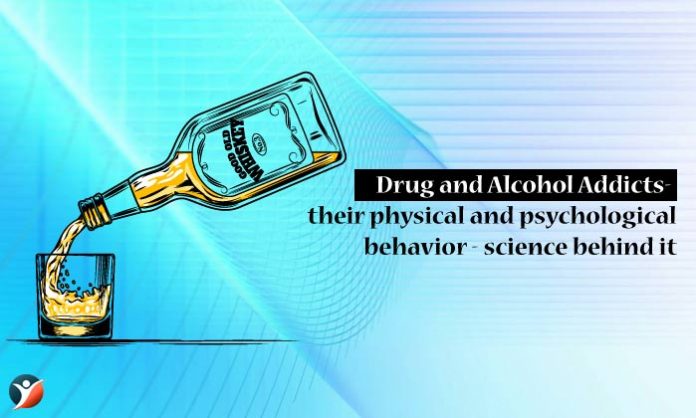
Life of addicts gets considerably impaired with addiction. Addiction is marked by inability to stop using substance despite the fact that it has negative consequences. Addicts often report substance abuse feels ‘out of control’. They may feel like not using it but they can’t do so. Most of the times, people deny the problems substance abuse is causing them and need help to be able to identify and recognize the problem.
Table of Contents
- Physical Signs
- Behavioral Changes
- Looking out for drug paraphernalia
- Look Out for Changes in Daily Life
- Science Behind Addiction
- Conclusion
Addiction is accompanied by physical dependence and tolerance. Tolerance happens when the body gets adjusted to the substance of use and higher doses are required to reach the desired effects. This leads to dependence. The body functions normally only when there is presence of addictive substance and in its absence, they will experience withdrawal symptoms.
People close to the addicts may notice changes in behavior. The individual will require to use drugs or drink to become intoxicated. Additionally, the person may exhibit withdrawal signs like sweating and shaking when not using the addictive substance.
As per Mayo Clinic, normal teenage behaviors are difficult to tell apart from the symptoms of substance abuse. Rebellion, moodiness, fluctuations in interest are common attributes of adolescence and do not signify problems. Closed ones like friends and guardians should look for signs beyond the normal teenager behavior.
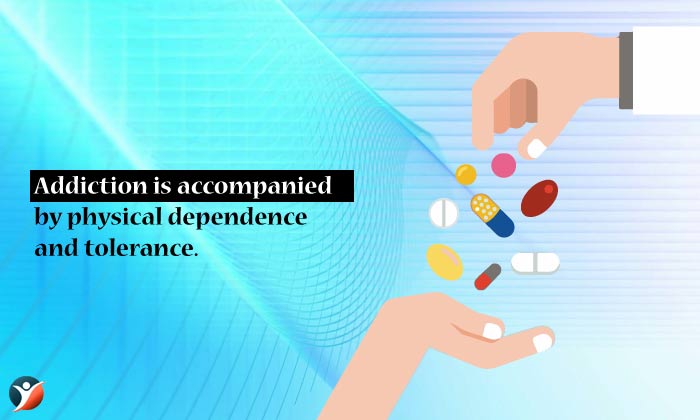
Addiction is pervasive,it influences all aspects and areas of a person’s life. There are signs that can be watched for by friends and families which indicate addiction. There are many physical, behavioral and social signs of substance abuse [1]
Physical Signs
Drug or alcohol addiction can have profound and devastating effects on physical health. The following signs may be observed in addicts:
-
- Insomnia
- Headaches
- Flushed skin
- Nausea
- Husky voice
- Broken capillaries on face
- Blood in vomit
- Trembling hands
- Symptoms of withdrawal when going without the substance
- Chronic gastrointestinal distress
- Dilated Pupils
- Track marks or marks caused by injection drug
- Weight loss or weight gain
Behavioral Changes
As we have already mentioned, addiction has an effect on every person’s life. The person will want to use drugs and alcohol even if the substance abuse negatively affects the health, daily functions, relationships [2]. The behavioral changes of addiction are among the first signs to be noticed. The following changes may occur:
- Memory loss and blackouts
- Fights and arguments
- Resorting to drugs or alcohol for relaxing, improving mood, and assisting in sleep
- Mood swings and depression
- Drinking when nobody is present
- Not finding pleasure in activities that were once enjoyed
- Cutting off from family, friends; neglecting hobbies, sports etc.
- Telling lies
- Engaging in risky behavior
- Not being able to take care of hygiene, clothing, grooming
- Unaccounted for injuries and accidents
- Borrowing and stealing money.
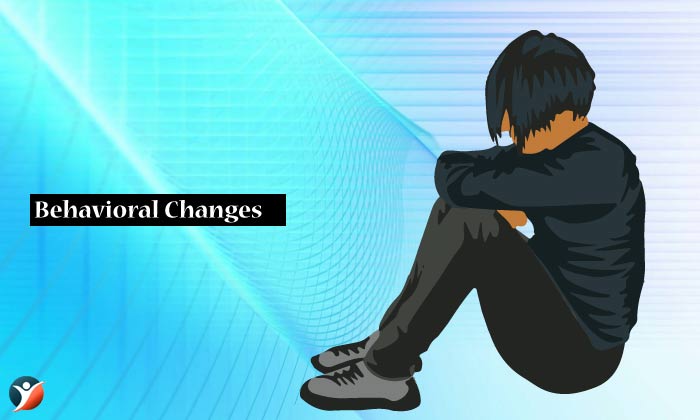
Lookout for Drug Paraphernalia
Guardians of children having addiction may want to search the belongings of their children for drug paraphernalia. Everyone has a right to personal privacy but as care takers it is your duty to know what your child is up to and if you suspect that your child is using illegal substances.
If the person is an adult, it may be difficult to search for drug paraphernalia and you should look out for it in shared spaces if you feel that you should not invade personal spaces. For help you can contact a therapist or addiction professional.
The following forms of paraphernalia are listed by the U.S. Department of Justice
- Pipes: These can be made out of materials like glass, wood, acrylic, plastic, ceramic
- Miniature Spoons: These are used for dissolving drugs in liquid before injection
- Water pipes or bongs: These are made from glass and draw the smoke through water for cooling before it can be inhaled
- Chillums: This is a cylindrical pipe for inhaling marijuana
- Cigarette Papers: It is used for rolling joints filled with drugs which are then smoked.
- Injection needles: These are used for injecting pain killers and certain drugs like heroin.
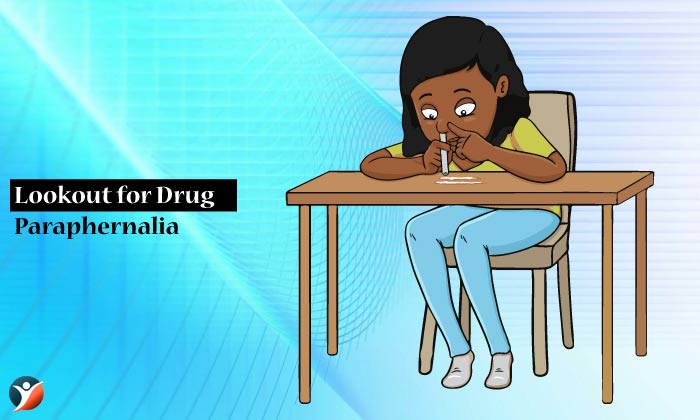
Lookout for Changes in Daily Life
There may occur changes in relationships with excessive use of alcohol or drugs. These people start spending more time with individuals who are into drug abuse than with friends and family. Loved ones may find that the individual has started spending less time with family and spends more time alone and does not share his/her feelings.
Performance on work front or in school may decline. A student performing well earlier may experience a significant drop in grades and may appear not so bothered about schoolwork, job etc. He may find that there may be problems with coworkers, colleagues and supervisors.
Substance abuse occurs with mental health illnesses like anxiety and depression. If a person finds himself having anxiety or mood disorder, they may want to use illicit alcohol or drugs. Addicts experience a shift in personality, physical health and behavior.
Understanding the behavior of addicts is difficult as addicts act irrationally when it is about drugs. They use these substances excessively and obsessively and the use becomes more and more as they develop tolerance. For families and friends who do not use drugs, they can’t understand why they are going through this and it pains them to see their downhill side. It’s baffling to see someone close to you fall in the pits of addiction, a decline which results in death.
Addicts act irrationally as the disease skews their motivation. They value their emotional needs more than anything else and the drugs that meet those requirements and needs. They do not really value the consequences of drug abuse.
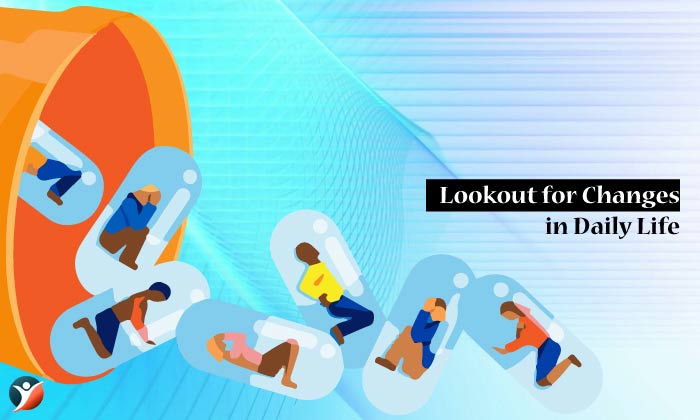
Science Behind Addiction
People with addiction do not have control on their actions. They crave and look out for drugs, alcohol and other substances irrespective of the cost- with risk of damaging relationships, losing jobs. What is about addiction that people start behaving in such destructive ways. Now we do need to know the science why it is so hard to quit. NIH scientists are working to know the science behind it. Addiction is a long lasting and complex brain disease. The biological reason of addiction explains why people need more than willpower to counter their addictions. Addiction changes the brain and a lot of work is needed to bring it back to normal state. More the doses of drugs or alcohol taken, greater the disruption.
It has been found by researchers that addiction is so powerful that it destroys the key regions of brain which help us to survive. Healthy brain encourages healthy behaviors. Example: exercising, bonding with loved ones, eating. This happens as brain circuits get switched on to make you feel wonderful and this motivates you to repeat those behaviors. And when you are in danger, a healthy brain makes you react with fear so that you can take yourself out of the harm. The front region of the brain helps you decide whether the consequences of an action are worth it.
But when you get addicted to a substance, the wiring of the brain starts working against you. Alcohol and drugs hijack or disturb the reward/pleasure circuits in the brain and make you want more and more. The emotional danger sensing circuits also get affected with addiction sending you into anxiousness and stress when you are not using the alcohol or drugs. People in this stage usually use drugs or alcohol to not feel bad instead of having the pleasurable effects. Additionally, repeated use of drugs can be damaging to the decision-making center in the brain. This region is the prefrontal cortex that would help you identify harms of using addictive substances.
Dr. Nora Volkow, director NIH Drug Abuse says that brain imaging studies of addicts reveal decreased activity in the frontal cortex. And when this region is not functioning properly, people can’t take the decision to stop taking the drug or alcohol and even if they realize that there may be dangerous consequences of doing what they are doing, yet they continue with it.
Conclusion
It is not understood why some people get addicted and others don’t. Addiction could be hereditary and some genes are associated with different types of addiction. There are many other factors that can raise your chances of addiction like being abused during childhood, growing up with an alcoholic, getting exposed to too much stress, all these can lead to alcohol addiction and drug abuse. And with drinking or drugs, the sooner you start, greater the chances of having the addiction disorder later in life.
Teens are more vulnerable to addiction as the brains are not fully developed especially the frontal region that deal with impulse control. Pleasure circuits in brains of adolescents are in overdrive so drug and alcohol abuse is all the more rewarding and exciting.





